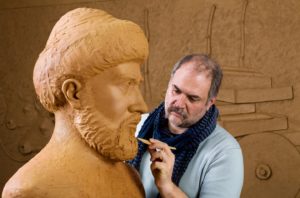Have you ever had a really, really great idea that you just know can change the world or at least make a significant impact? Entrepreneurs and professionals in creative fields often experience this. They have a vision so clear that they know they must pursue it, believing it will change lives. The challenge then becomes conveying that vision to a team, which could range from a few individuals to a multinational workforce of thousands. If only our brains had a “SHARE” button like on social media!
For freelancers, unpacking the details of a project without sharing a brain with your client is complex. It can be slow, full of errors, miscommunication, and frustration. Enter the not-so-mysterious solution that many know about but often neglect: the project brief.
I’m a huge fan of the project brief, partly because of my obsessive…err, I mean, my committed attention to detail. But for those of you who may not be familiar with it, let’s start at the beginning.
The Project Brief, An Origin Story
 Rumour has it that a famous sculptor in 300 BC Rome was so overwhelmed with commissions for his work that he employed a young page (at the time also referred to as a “brief”) to collect more information from potential commissioners before agreeing to meet. OK, this is a completely fictional tale that I just made up to illustrate that the need for clear client-creative communication isn’t new.
Rumour has it that a famous sculptor in 300 BC Rome was so overwhelmed with commissions for his work that he employed a young page (at the time also referred to as a “brief”) to collect more information from potential commissioners before agreeing to meet. OK, this is a completely fictional tale that I just made up to illustrate that the need for clear client-creative communication isn’t new.
As a digital marketing partner for small businesses, I work on a variety of projects, from brochures to videos and from social media to websites. There’s hardly been a time when a project brief wasn’t helpful. To use a sports analogy, starting with a brief helps you bat a thousand—that is, it helps you have a successful launch to your project, every time.
Uses and Benefits of the Project Brief
Just like ingrained attitudes about meetings, beliefs about project briefs can be hard to change, especially within a small business (and for good reason). Formalizing processes might not be a priority early on, and small teams might lack the knowledge or bandwidth to create briefs.
Here’s why this needs to change.
Defining the Scope
A project brief helps you define the scope of the project, outlining exactly what needs to be done and avoiding scope creep. This means that both the client and freelancer share a common understanding of project goals.
Ensuring Alignment
The brief ensures alignment between client and freelancer in terms of project goals, expectations, and deliverables. This alignment is crucial for successful project outcomes.
Saving Time and Money
A project brief will save you time and money by limiting misunderstandings and reducing the need for revisions and rework. And who doesn’t love efficiency?
Setting Realistic Expectations
The brief helps you set realistic expectations for both the freelancer and the client, ensuring that everyone is on the same page from the start. Thus leading to smoother project execution and greater satisfaction on both sides.
How to Create the Perfect Project Brief
 Creating the ideal project brief involves starting with the basics and gradually adding more details.
Creating the ideal project brief involves starting with the basics and gradually adding more details.
The Big Picture Questions
- Provide a brief brand/business overview.
- What is your unique selling proposition?
- Who are your competitors?
- Who is your target audience?
- What is the project goal or objective?
- What is the key messaging?
- What actions are you trying to elicit with this project?
In addition to these broader questions, you also want to think about the details and logistics.
Logistics and Details
- Timeline and Deadlines: What are the key milestones and final deadline for the project?
- Budget: What is the budget for this project?
- Stakeholders: Who are the key stakeholders involved?
- Deliverables: What specific deliverables are expected?
Example Project Brief
 Let’s go back to our fictional 300 BC aristocrat who wants to commission a sculpture from our creative guy. Here’s what his brief might look like:
Let’s go back to our fictional 300 BC aristocrat who wants to commission a sculpture from our creative guy. Here’s what his brief might look like:
- Provide a brief brand/business overview. An affluent Roman aristocrat seeking to commission a unique sculpture to commemorate his family legacy.
- What is your unique selling proposition? The sculpture should be an innovative blend of classical and contemporary styles, unlike any other in Rome.
- Who are your competitors? Other wealthy patrons commissioning works from renowned artists.
- Who is your target audience? The Roman elite and visitors to the family estate.
- What is the project goal or objective? To create a masterpiece that reflects the family’s prestige and artistic vision.
- What is the key messaging? This sculpture symbolizes the enduring legacy and sophistication of the family.
- What actions are you trying to elicit with this project? To inspire awe and admiration among peers and visitors.
He’ll also fill in his budget and other logistical details.
Create Your Own Project Brief
 By investing a little time upfront to create a comprehensive project brief, you can ensure smoother project execution, better client relationships, and more successful outcomes. If you need a little help, you know where to find me.
By investing a little time upfront to create a comprehensive project brief, you can ensure smoother project execution, better client relationships, and more successful outcomes. If you need a little help, you know where to find me.
Now embrace the brilliance of the project brief and watch your great ideas transform into reality!
